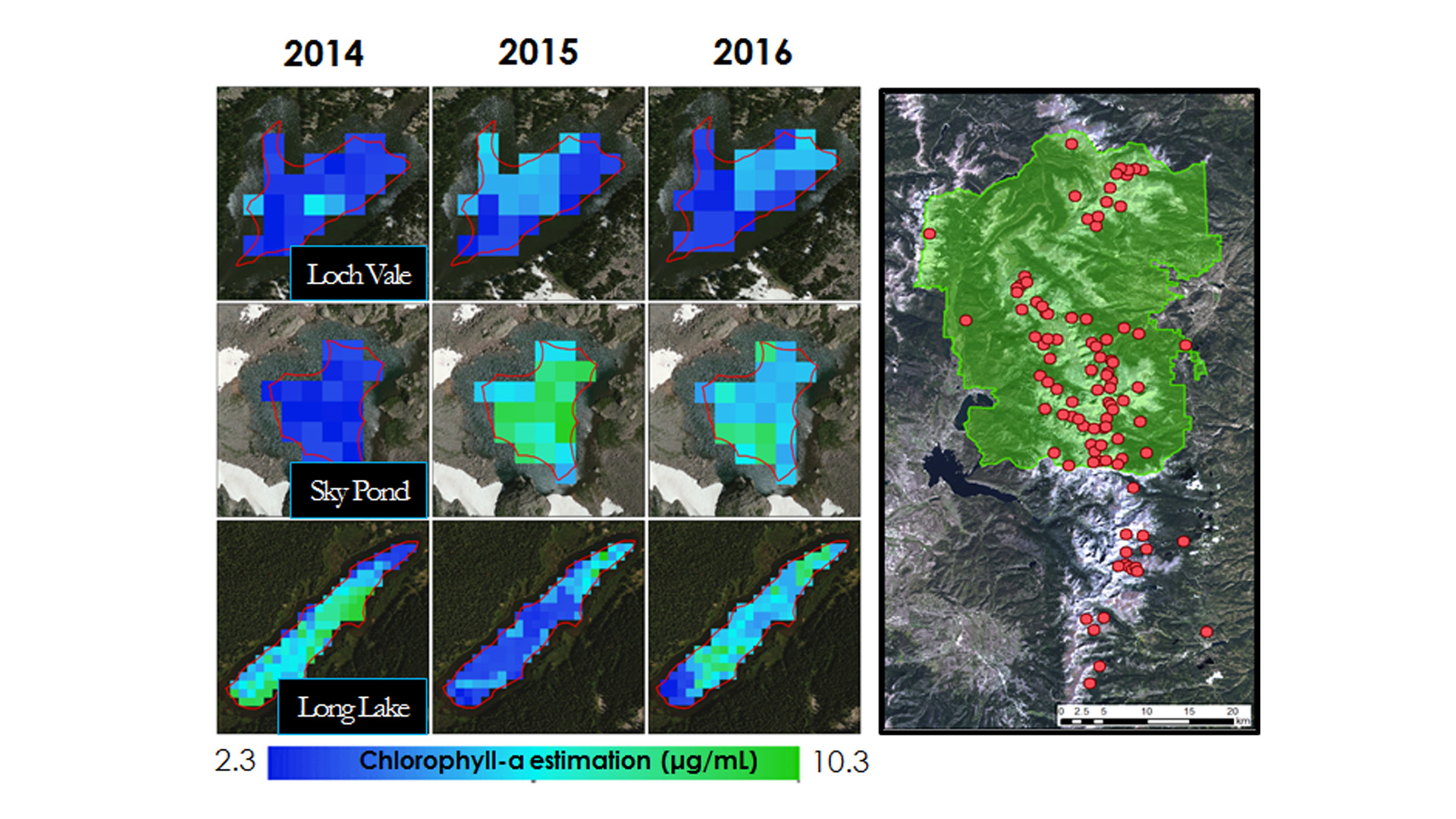Rocky Mountain National Park Climate

Monitoring Algal Productivity to Inform Spatiotemporal Alpine Lake Dynamics in Rocky Mountain National Park
Rocky Mountain National Park has over 140 alpine lakes that provide critical habitats for animal and plant species. Since the 1960s, these lakes have experienced an increase in nitrogen and phosphorus depositions resulting in increased algal productivity. Beginning in 2005, algal biomass has continued to increase despite relatively constant nutrient deposition. The United States Geological Survey (USGS) and National Park Service (NPS) are exploring if recent temperature changes explain this trend. Excessive algal productivity negatively affects water quality through eutrophication and the creation of anoxic events. It is important to monitor algal productivity in Rocky Mountain National Park (RMNP) lakes to prevent associated environmental degradation and socio-economic decline. The team assessed the accuracy of Landsat 8 Operational Land Imager (OLI) in estimating chlorophyll-a levels compared to in situ measurements. Earth observations provided a comprehensive analysis that has potential to supplement partner in situ data collection methods. The best performing model produced by the team was used to create algal productivity maps for RMNP lakes and has potential to inform NPS adaptation management efforts.
Project Video:
Assessing Algal Productivity in Rocky Mountain National Park
- Location
- USGS at Colorado State University
- Term
- Fall 2016
- Partner(s)
- National Park Service, Rocky Mountain National Park
United States Geological Survey, Fort Collins Science Center (FORT) - NASA Earth Observations
- Landsat 8, OLI
- Team
- Amy Stuyvesant (Project Lead)
Emily Campbell
Benjamin Ignac
Muthukumaran Sampath - Advisor(s)
- Dr. Paul Evangelista (Colorado State University)
Dr. Amanda West (Colorado State University)
Tony Vorster (Colorado State University)